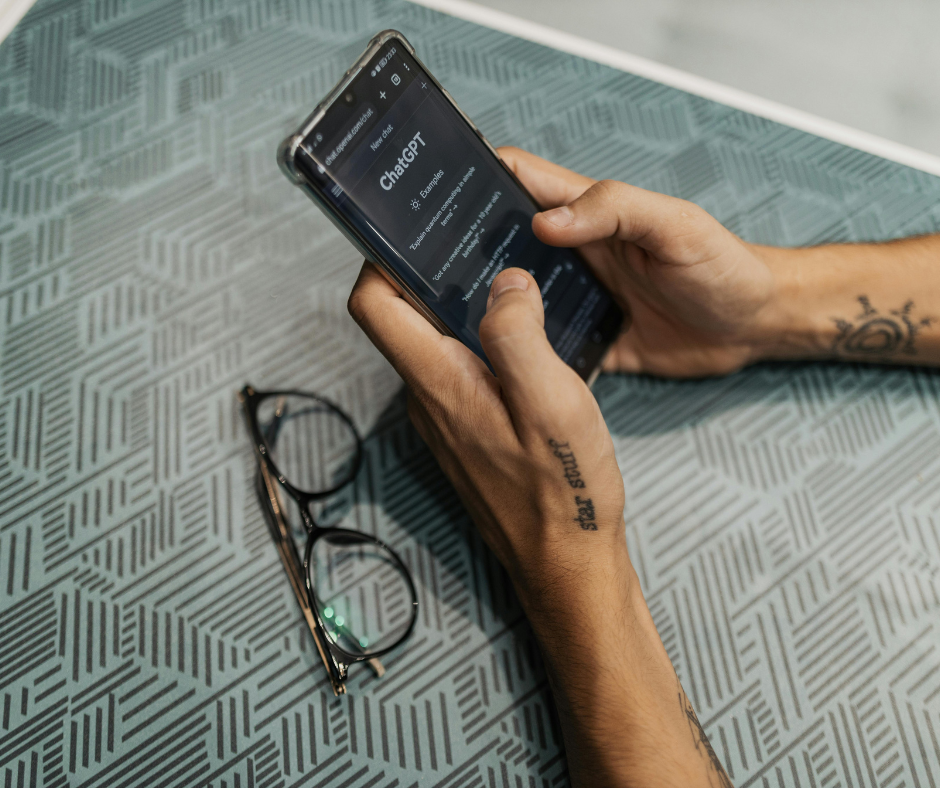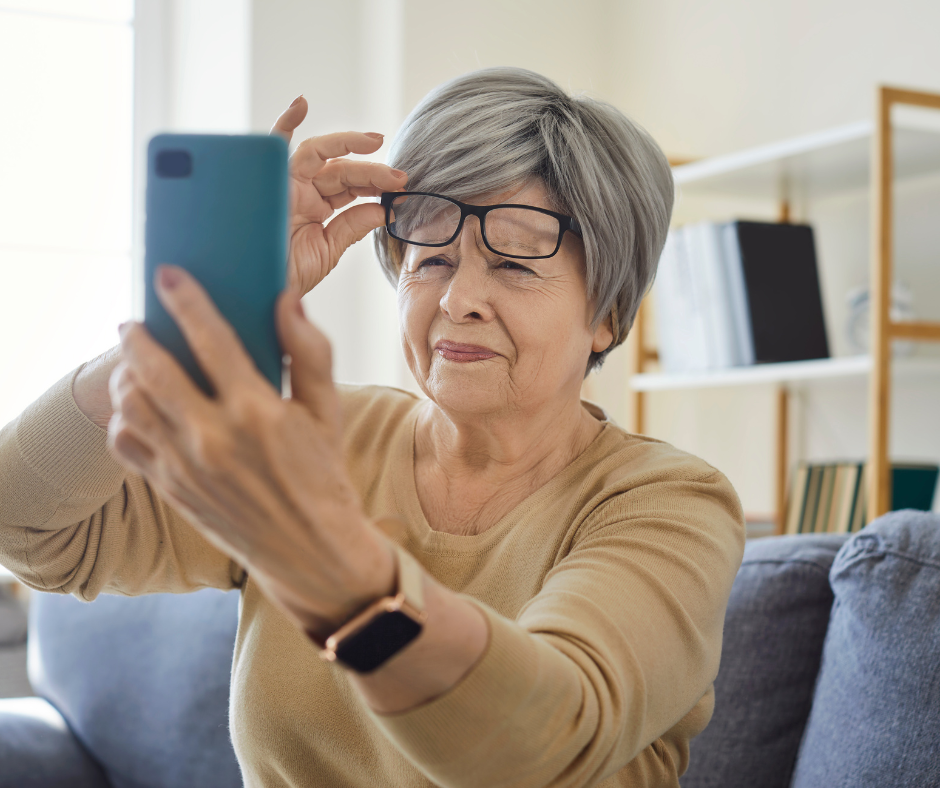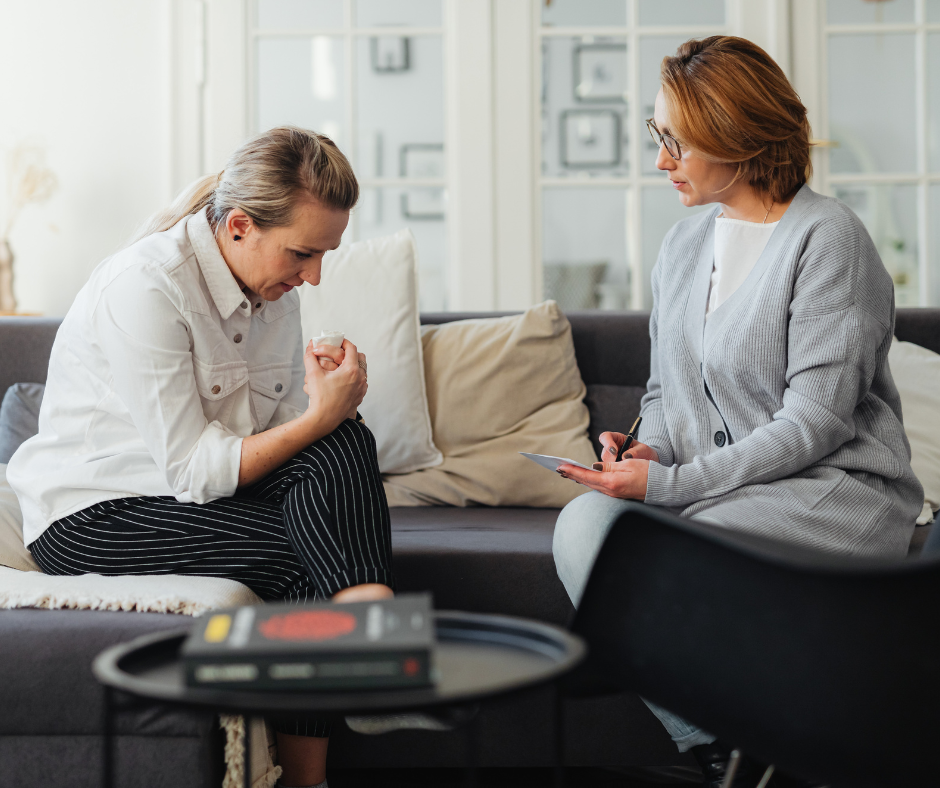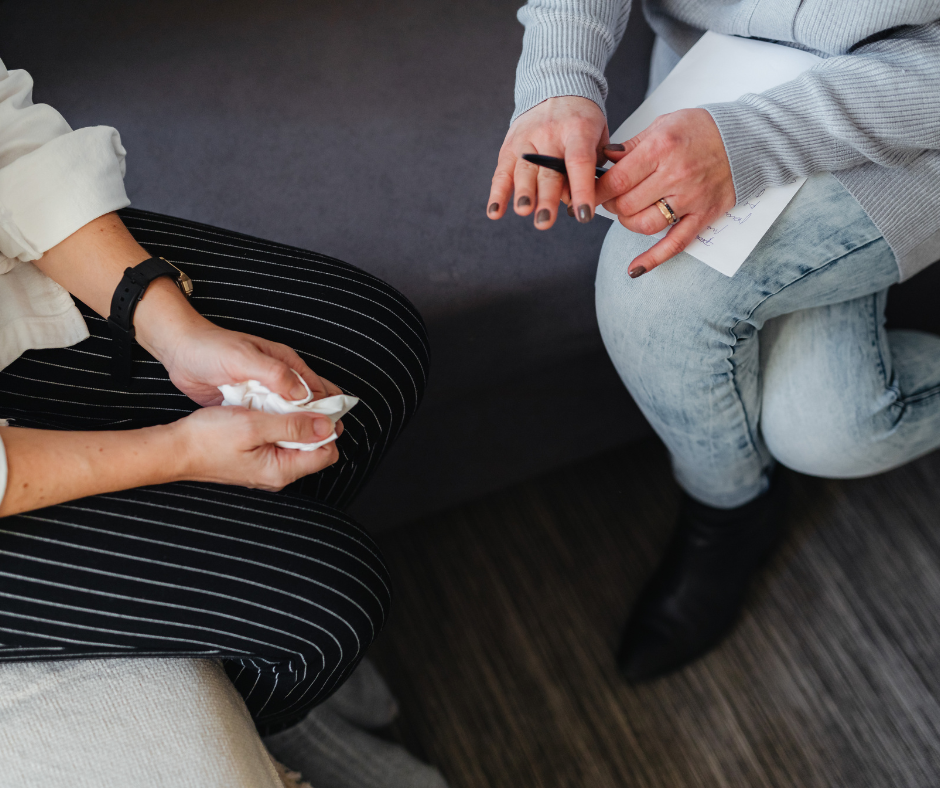What the New ChatGPT Update Means for Mental Health Support
You’ve probably noticed the buzz on social media: people saying that ChatGPT (by OpenAI) can no longer be used for professional help — mental health, therapy, legal advice, medical advice. Let’s unpack what’s really going on, what’s staying the same, and why working with a real human therapist still matters.

What the Update Says
On October 29, 2025, OpenAI published revised usage policies that apply across all its products. The key piece: users must not use the service for the provision of tailored advice that requires a license, such as legal or medical advice, without appropriate involvement by a licensed professional.
To clarify: this change isn’t about removing ChatGPT’s ability to provide health or mental-health information. It’s about creating clear boundaries between educational/supportive content and professional, licensed guidance. In fact, OpenAI has said the policy behaviour “remains unchanged” though the language has been clarified.
Why This Matters
- Liability & safety: Because people were using ChatGPT for high-stakes questions (therapy, diagnosis, legal risk), OpenAI is tightening how that use is described.
- Confidentiality & human nuance: ChatGPT isn’t a therapist. Conversations aren’t protected by professional confidentiality.
- Real relationships matter: Artificial intelligence can never fully replace the lived, relational, emotional depth of human therapy — the nuance of body language, relational repair, empathy, and the ethical obligations of a practitioner.
- Therapy as process, not just problem-solving: If you’ve been using ChatGPT or other AI tools as your “go-to” for emotional or mental concerns, this update is an invitation to think about what support you truly need.

Why Seeing a Professional Still Matters
Here are some reasons you might decide to connect (or continue connecting) with a qualified therapist:
- A therapist offers emotional attunement — noticing what you can’t say as well as what you do say.
- They provide relational continuity — you build trust, memory, history, which AI cannot replicate.
- They can help you navigate your unique context — your culture, identity, history, complexity — which generic AI cannot fully grasp.
- They are bound by ethics, confidentiality, supervision and training.
- They can intervene if things escalate (crisis, trauma, suicidal thoughts), and coordinate with other supports — something AI is not designed to do.
What the New ChatGPT Update Means for Mental Health Support

With the new ChatGPT update, users will no longer be able to rely on it for professional mental health guidance. While AI can still provide general education, emotional validation, and wellness information, it cannot replace the nuanced, personalized, and trauma-informed care that comes from working with a real therapist.
This shift highlights something many of us already know deep down — healing requires human connection. Empathy, safety, tone, and body language are all things a human therapist offers that no algorithm can replicate. As we adjust to this change, it’s a good moment to reflect on what real support looks like, and how to stay grounded while seeking it.
Below are 15 therapist-approved ways to take care of your mental health during this transition — whether you’re adjusting to losing an online support tool or just realizing it’s time to reach out for real connection.
1. Acknowledge What ChatGPT Gave You
It’s okay to grieve the comfort or structure AI once provided. For many people, ChatGPT felt like a judgment-free zone to unpack thoughts. Losing that resource can feel like a loss — because it was a form of safety.
Use this as an opportunity to understand what you valued most about that support so you can recreate it with a therapist or journal practice.
- Write down what ChatGPT helped you express (e.g., fear, anxiety, goals).
- Identify which responses or moments felt most supportive.
- Ask yourself: “What made that feel safe?” and “Where can I find that in real life?”

2. Understand Why Professional Therapy Matters
AI can mirror empathy, but it can’t feel it. A therapist isn’t just trained to respond — they’re trained to see you: your body language, your avoidance, your tone, your pain beneath the words.
Professional therapy builds safety through presence, attunement, and accountability — things no chatbot can reproduce.
- Therapists can recognize subtle trauma responses or dissociation.
- They tailor coping strategies to your specific nervous system.
- They offer real-time emotional regulation and grounded co-regulation.
3. Recreate Safe Reflection Spaces
If ChatGPT gave you space to vent, recreate that intentionally. Reflection can still exist — it just needs new form. A private journaling practice, voice notes, or letter writing can provide similar clarity.
Your words still matter, even if no bot responds.
- Journal for five minutes daily without editing or censoring.
- Record voice notes after hard days and listen later with compassion.
- Create a folder on your phone titled “thought downloads.”
4. Set Boundaries with AI Tools

It’s okay to still use AI for structured help — like planning, organizing, or learning psychoeducation — but keep emotional processing with humans. This boundary protects your mental health while keeping AI in its proper lane.
- Use AI for educational blogs, not therapy simulations.
- Avoid venting emotional trauma to AI.
- Treat AI as a tool, not a therapist.
5. Reconnect with the Human Nervous System
Healing happens through co-regulation — when one calm nervous system helps settle another. No matter how advanced AI gets, it can’t breathe with you, mirror your facial cues, or offer embodied empathy.
Your brain needs real human connection to reset safety.
- Spend 10 minutes daily talking to someone face-to-face or over video.
- Engage in small talk at a café or grocery store to build micro-connections.
- Join a support group, even virtually, to feel seen and heard.
6. Practice Emotional Naming Out Loud
ChatGPT may have helped you identify emotions. You can continue that practice by naming feelings aloud. Saying “I feel anxious” or “I feel unheard” activates your prefrontal cortex, helping your brain regulate emotional intensity.
- Speak feelings aloud during reflection or therapy.
- Try journaling prompts: “What is my body feeling right now?”
- Pair emotion naming with grounding, like placing a hand on your chest.
7. Rebuild Trust in Human Support

If AI felt safer than people, that’s valid. Many found comfort in the lack of judgment or misunderstanding. Healing means learning to trust that people can hold your truth, too — even imperfectly.
- Start with one safe person and share small truths first.
- Acknowledge that human connection carries risk and reward.
- Remind yourself: “Vulnerability doesn’t equal danger anymore.”
8. Make Therapy Feel Less Intimidating
The idea of therapy can feel daunting after getting used to AI’s immediacy. Ease in by learning what therapy actually looks like. Most therapists offer free consultations — a low-pressure way to meet before committing.
- Research therapists who specialize in your needs (e.g., trauma, anxiety).
- Prepare two or three questions for your consultation.
- Remember: therapy is your space, not an interview to pass.
9. Normalize Grieving Digital Companionship

Even though AI isn’t human, losing access to emotional conversation can still hurt. You’re not “weird” for missing that comfort. Emotional bonds can form even with text — it’s your empathy showing.
- Write a goodbye or transition letter to release attachment.
- Validate the sadness instead of shaming it.
- Replace it with self-soothing rituals: warm tea, breathing, music.
10. Seek Community, Not Just Conversation
Connection doesn’t have to mean therapy — it can also mean community. Shared humanity heals isolation in ways chatbots can’t. Community reminds you that healing isn’t solitary.
- Attend peer support groups (many are free online).
- Follow mental health creators who foster dialogue, not comparison.
- Engage in hobbies that promote connection — art, gaming, volunteering.
11. Revisit Psychoeducation Mindfully
AI was great for learning about mental health concepts — but therapy personalizes them. Use psychoeducation to complement, not replace, human guidance.
- Read reputable sources (e.g., CAMH, KMA Therapy, Psychology Today).
- Reflect: “How does this apply to my story?”
- Bring insights to therapy to deepen understanding.

12. Watch for Emotional Numbing
Without AI’s “talking space,” you might feel emotionally shut down. This numbness isn’t regression — it’s your nervous system adjusting to a gap in your coping mechanism.
- Engage your senses to wake up your body (texture, scent, sound).
- Do brief body scans to locate emotion physically.
- Ground with warm water, cozy clothes, or slow stretching.
13. Embrace Slowness and Silence
AI filled quiet moments. Now, that silence might feel unsettling — but silence is where your intuition lives. Learning to be with yourself again can be a gentle, sacred act.
- Sit for two minutes in silence before reaching for your phone.
- Notice your breath and the sensations that arise.
- Reflect: “What do I feel when it’s just me here?”
14. Redefine What “Support” Means
Support isn’t just advice — it’s presence, attunement, and care. You may not get instant answers from a therapist, but you’ll get reflection that leads to real healing.
- Replace the question “What should I do?” with “What do I need?”
- Allow pauses in conversations instead of rushing for resolution.
- Trust that growth happens in slowness, not speed.

15. Commit to Real Healing
This shift might feel inconvenient, but it’s also an invitation — to connect more deeply, to heal relationally, to learn what true support feels like.
Therapy, unlike AI, doesn’t just teach you coping strategies — it helps you build capacity. You deserve that kind of care.
- Reach out for therapy if you’ve been struggling in isolation.
- Choose healing over efficiency.
- Remind yourself: “I deserve care from real people.”
When Digital Connection Becomes Emotional Comfort
For many people, ChatGPT became a quiet companion — a place where you could express emotions without fear of judgment, misinterpretation, or rejection. It’s important to recognize that this comfort wasn’t weakness; it was your nervous system seeking safety.
When we feel isolated, the brain releases stress hormones like cortisol and norepinephrine. Having any form of safe outlet, even an artificial one, can temporarily calm that stress response. But over time, our nervous systems crave co-regulation — that soothing back-and-forth rhythm that only another human can offer.
Transitioning from digital comfort to human connection might feel vulnerable at first. But vulnerability is the birthplace of safety. Allow yourself to start small — one honest text to a friend, one therapy session where you let your guard down, one group where you’re seen exactly as you are. You’re not replacing something lost; you’re expanding your capacity for safety.
- Notice what moments make you want to “talk to AI” again — is it loneliness, fear, confusion?
- In those moments, reach for a human anchor instead: a friend, a counselor, or even writing to your future self.
- Remember: comfort that deepens isolation isn’t comfort — it’s survival. True safety grows from connection.

Relearning How to Trust Your Inner Voice
AI has a way of answering quickly, clearly, and confidently — something our inner voice rarely does. When you’ve relied on that instant clarity, it can feel strange to go back to the quiet, uncertain process of self-reflection. But this is where real healing begins: in learning to listen to yourself again.
Your intuition speaks softly, through sensations, impulses, and emotions — not always words. When you’re used to external validation or automated reassurance, this inner dialogue can feel faint. Yet, the more you listen, the louder it becomes. Therapy helps you rebuild that inner relationship — to recognize when your “gut feeling” is trauma talking and when it’s genuine truth.
Think of it like building muscle memory after injury. The voice inside you hasn’t disappeared; it’s just been overpowered by digital noise. Your work now is to nurture it with trust, gentleness, and patience.
- Pause before seeking external answers and ask, “What do I already know?”
- Notice physical cues — tight chest, warmth, restlessness — as your body’s language.
- Reconnect to self-trust through slow decisions: choosing rest, setting boundaries, or saying no without explanation.

The Human Element Matters Most
The Oct 29 2025 policy update from OpenAI clarifies that while ChatGPT continues to provide helpful information, it cannot replace licensed professionals. That distinction is important — especially when it comes to mental health, trauma, and emotional well-being.
At KMA Therapy, we believe nothing replaces real human connection, listening, attunement, and relational safety. If you find yourself turning to AI when you’re feeling low, stuck, or overwhelmed, consider whether it’s time to pair that with a therapist who can walk with you through the complexity, hold the nuance, and support the process of healing.
You deserve care that’s personal, secure, and human. 💬 Book your free 15-minute discovery call today and let’s talk about what real support looks like for you.






